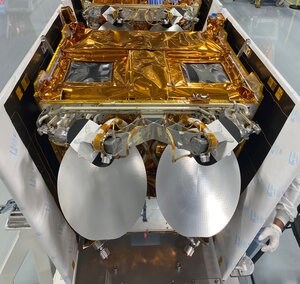Training programme
The objective of the Station training programme is to provide astronauts and ground personnel with the appropriate knowledge, skills and attitude required for Station operations, safety and mission success.
The training programme sequence is based on three training phases with specific objectives, characteristics, contents and certification:

Basic training
Basic training provides candidate astronauts with basic knowledge on space technology and science, basic medical skills and basic skills related to their future operational tasks, including those related to the Station systems and operations. It also includes training for special capabilities, e.g. scuba diving.
This training phase is a candidacy period and upon completion, successful candidates are certified as being career astronauts. Basic training has a duration of up to one year and follows the basic training core curriculum.
Advanced training
Advanced training provides Station astronauts with the knowledge and skills related to the operation of the Station space elements, payloads, transport vehicles and related interaction with the ground. It builds upon the basic training and is still independent of a specific increment. Upon successful completion of advanced training an astronaut is eligible for assignment to a mission. The duration of advanced training is approximately one year.
Increment specific training
Increment specific training provides a Station international crew (and a backup crew if applicable), assigned to an increment, the knowledge and skills required to perform the onboard tasks for this increment. To enable good crew integration, the crew is trained together as far as possible. The duration of increment specific training is approximately one and a half years.
Increment specific training is comprised of the following:
Job oriented training: mainly in the L-18 to L-12 month timeframe, however it may occur up to launch.
Partner element training: mainly in the L-12 to L-3 timeframe, uses team-oriented training involving tasks and systems knowledge, and concentrating on multiple crew member training on multiple jobs.
Multi-segment training: in the last six months of training the crew participates in multi-segment training (MST) putting together payload and systems operations for the entire Station. The crew works as a team, sometimes with ground controllers via integrated simulations.
On-board training: This is considered to be part of increment specific training and is used by the crews to retain proficiency in skills and knowledge gained in ground training. On-board trining (OBT) will limit the need for extensive training on all aspects of a particular job and make the training period shorter and more effective, e.g. specific maintenance actions. In general the training will cover medical, core drills and servicing, and robot operations specific skills. OBT may require special on-board simulators.
Each astronaut receives basic and advanced training once and specific courses as refresher training as required.
The limited time available for training, extended periods between training on specific systems and payloads, and actual on-board operations due to the distributed training system will require on-board training in particular as refresher training.















 Germany
Germany
 Austria
Austria
 Belgium
Belgium
 Denmark
Denmark
 Spain
Spain
 Estonia
Estonia
 Finland
Finland
 France
France
 Greece
Greece
 Hungary
Hungary
 Ireland
Ireland
 Italy
Italy
 Luxembourg
Luxembourg
 Norway
Norway
 The Netherlands
The Netherlands
 Poland
Poland
 Portugal
Portugal
 Czechia
Czechia
 Romania
Romania
 United Kingdom
United Kingdom
 Slovenia
Slovenia
 Sweden
Sweden
 Switzerland
Switzerland
























